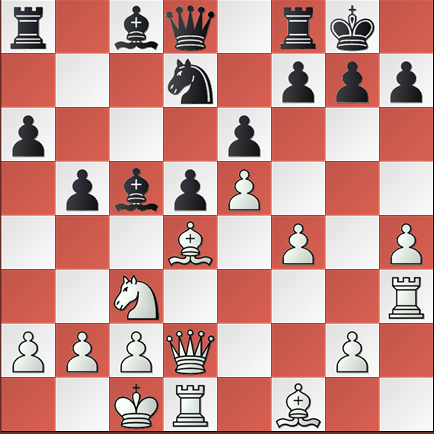Of the three stages in the game of chess, the most important and deciding part is the middle game, where the real action takes place. However, one needs to be aware of the fact that the middle game always follows the opening game. In other words, the course of the middle game is determined by the opening game, and the effectiveness of the opening game and the position of the various pieces as part of the development, more or less, decide the strategy to be adopted in the middle game.
One of the many opening variations played regularly in tournaments is the French opening, where invariably the first and second moves of black are e6 and d5. Whatever might be the reasons behind those moves, the inconsequence of these moves, if not properly attended, might lead to a situation where the black’s light squared bishop is blocked by the pawns at e6 and d5, effectively cramping its development. It is for this very reason, experts in French opening advise that black’s light squared bishop is sacrificed at the initial stages of development. If that light-squared bishop is not effectively handled, this French bishop, as it is otherwise called, might turn out to be a bad French bishop, and hinder the prospects for black in further development.
Let us try to assess the consequences of the bad French bishop with the help of this following game played between two grandmasters. This is a typical French defense or French opening. The opening moves are as follows:
| 1. | e4 | e6 |
| 2. | d4 | d5 |
| 3. | Nc3 | Nf6 |
| 4. | e5 | Nfd7 |
| 5. | f4 | c5 |
| 6. | Nf3 | Nc6 |
| 7. | Be3 | cxd4 |
| 8. | Nxd4 | Bc5 |
| 9. | Qd2 | a6 |
| 10. | 0-0-0 | 0-0 |
| 11. | h4 | Nxd4 |
| 12. | Bxd4 | b5 |
| 13. | Rh3 |
The position is given hereunder:

As can be seen from the position, black’s light squared bishop is rooted to its original square at c8, unable to be deployed effectively. Black tried to break the shackles with the following move, which most of the grandmasters tried and tested but without much success.
| 13. | …. | Bb7 |
| 14. | Ne2 | Bxd4 |
| 15. | Nxd4 | Nc5 |
| 16. | Bd3 | Ne4 |
| 17 | Bxe4 | dxe4 |
| 18. | f5 | Bd5 |
Instead of the routine Bb7 move, had Black tried the variation
- ….. b4
- Ne2 a5
- ….. a6 (his bad French bishop would have got a better opportunity to play an important role in the game)
The position after the 18th move is given hereunder:

The game proceeded with black literally in the doldrums having committed a blunder of moving the bishop to d5.
| 19. | f6 | gxf6 |
| 20. | Qh6 | 1 – 0 |
This is yet another example of bad French bishop playing the spoilsport in Black’s party, and coupled with some avoidable blunders, Black has surrendered the advantage and the game to the smart play of White who capitalized on black’s light-squared bishop.


One Comment
Bishop sometimes can be the most valuable thing if someone can use it properly
Trackbacks/Pingbacks